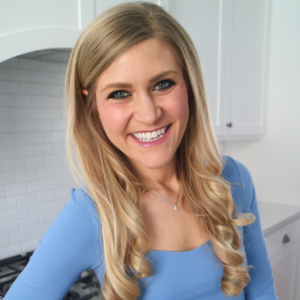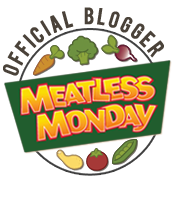Balanced Eating
Fad diets and “quick” fixes to weight and chronic disease prevention are everywhere. Take this magic potion, use these portion size cups, follow this strict meal plan—- and all your problems will be solved. Not so fast! Healthy eating shouldn’t be that complicated— and dramatic results that stick don’t just happen overnight. The best solution for all your long term health goals (e.g. preventing cancer, losing weight–and keeping it off!) requires work and dedication– it requires lifestyle habits that may take more than 21 or 30 days to develop and maintain. It requires realistic solutions– such as changing your food environment and learning skills for living and eating well in environments that don’t favor healthy habits.
The balanced eating plate method is one thing I cover with every one of my clients at our first session. It’s a really easy way to get started on a healthy eating track! Loading your plate with foods that come from plants is one of your best long term solutions for maintaining a healthy weight and preventing a number of chronic diseases. Plants are chock-full of phytonutrients, fiber, vitamins, minerals— a number of important nutrients your body needs to keep every cell in your body healthy, every single day!
Learn how to build a healthy, balanced plate.
Meals should contain multiple components— not just simple carbs and proteins, but a balance of nutrients. The key is also to load your plate with antioxidant-rich foods (i.e. fruits, veggies, whole grains, beans, nuts, seeds— foods from plants) to lower inflammation, promote a healthy gut flora, and ultimately prevent diseases. A simple method for building a healthy, balanced plate is to make:
- ½ the plate non-starchy vegetables (e.g. greens, eggplant, carrots, cucumbers, celery, beets).
- ¼ the plate whole grain (e.g. quinoa, wild rice, brown rice, bulgur, teff, oats, sorghum) OR starchy vegetables (e.g. potatoes, butternut squash, spaghetti squash, sweet potatoes).
- ¼ the plate beans, lentils, or other plant-based protein.
- Fruit may be used as a side, snack, or even dessert (for some meals, such as breakfast, it may make most sense to have 1/2 your plate or bowl be fruit instead of vegetables).
- Add some healthy fat (e.g. diced avocado, nuts, seeds, and nut/seed butters)
*Mixed dishes won’t be so easy to eyeball, but the idea is there should always be a lot of non-starchy veggies in the dish. If you are having a mixed dish with very few non-starchy veggies, then make sure to take a smaller portion of the mixed dish and load up on a veggie side. Or consider if you can add more vegetables to the dish! Breakfast may look a little different, with more fruit and less veggies— but don’t limit yourself to veggies only at lunch and dinner.
Learn more at Kaiser Permanente (PDF) , Harvard School of Public Health, and NutritionFacts.org.
For kids, see the plate from Plant-Based Juniors.
What about supplements? See the Optimum Nutrition Recommendation Page on NutritionFacts.org. Anyone following a plant-based diet, should take a B12 supplement or use fortified B12 foods.
Need inspiration for creating healthy, balanced meals? Check out the recipes below.

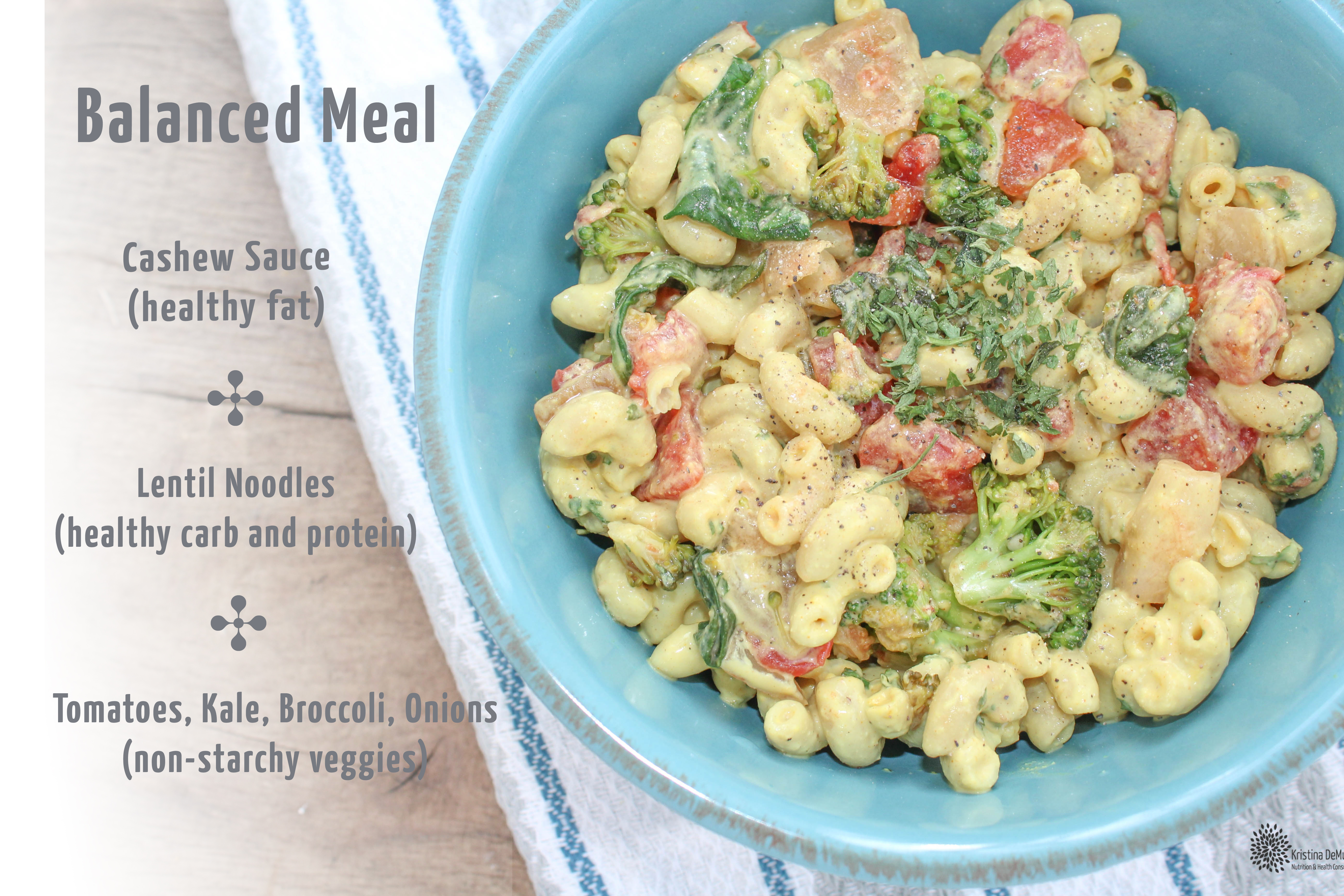
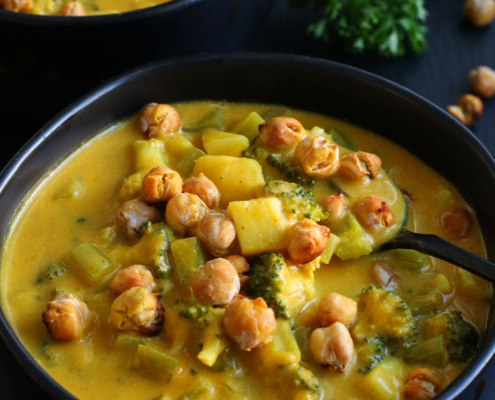 Kristina DeMuth
Kristina DeMuth Kristina DeMuth
Kristina DeMuth Kristina DeMuth
Kristina DeMuth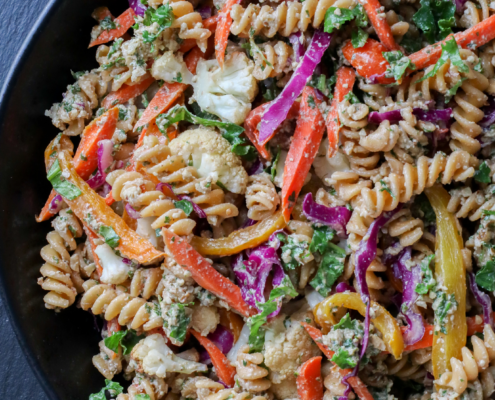 Kristina DeMuth
Kristina DeMuth Kristina DeMuth
Kristina DeMuth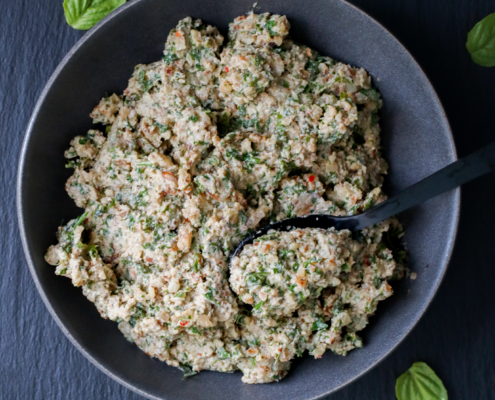 Kristina DeMuth
Kristina DeMuth Kristina DeMuth
Kristina DeMuth Kristina DeMuth
Kristina DeMuth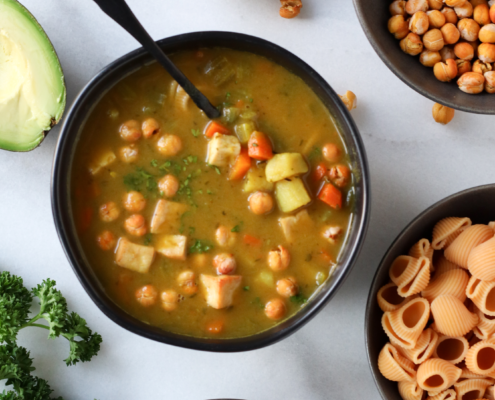 Kristina DeMuth
Kristina DeMuth